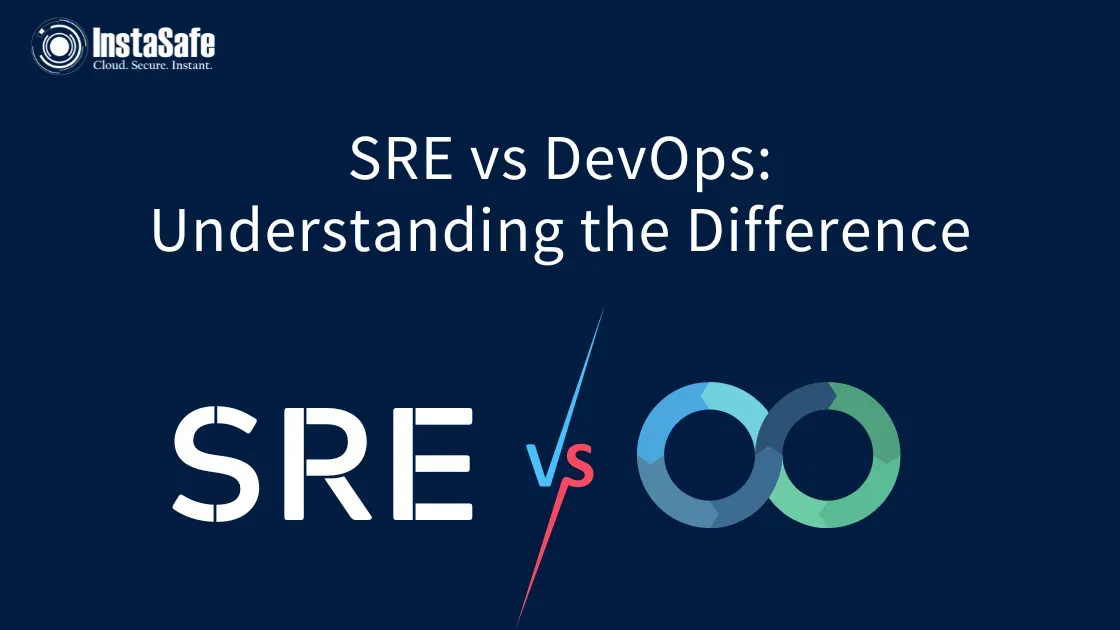SRE vs DevOps: Understanding the Difference

With the increasing application and software development complexity, organisations and companies are increasingly adopting operational solutions and methodologies that enable faster and more secure software development.
Two such very important and popular methodologies include DevOps and Site Reliability Engineering (SRE), which boost the product's and application's release cycle with automation, continuous delivery and monitoring, and collaboration.
However, many confuse these two models to be the same when there's clearly a stark difference between SRE and DevOps as a service.
In this article, we discuss these two operational models and highlight the differences between them for a clear understanding of SRE and DevOps.
Understanding DevOps
DevOps is a comprehensive set of practices where the operations and the development teams come together for seamless team collaboration to eliminate company silos, leverage automation, make implementing gradual changes a breeze, and handle failure much more efficiently.
It glues together development, IT operations, security, and quality assurance to ensure Continuous Integration (CI) and Continuous Delivery (CD) to deliver high-quality and reliable products or software to the customers much faster.
Here are the benefits of a secure DevOps solution for your organisation:
- Improves the speed of applications and software delivery with frequent release of small features and changes.
- Automates repetitive tasks resulting in rapid innovation.
- Reduces production costs by cutting down maintenance and infrastructure management errors.
- Enhances the productivity of software teams by creating a balanced solution for managing a Software Development Lifecycle (SDLC).
- Resolves queries and problems much more effectively and faster.
Let's take a look at SRE and its benefits.
Understanding SRE
Site Reliability Engineering or SRE's responsibility is to implement the product or software the core development team develops. Their key objective is implementing and automating DevOps practices to reduce errors and incidents and enhance scalability and reliability.
In addition, they also send constant feedback and suggestions to the DevOps teams based on Key Performance Indicators (KPIs), like efficiency, availability, latency, incident, and capacity.
Thus, SRE engineers are in charge of operations and ensuring higher reliability.
Talking about SRE vs DevOps engineer, here are the key responsibilities of an SRE engineer:
- Handling and managing support escalation issues.
- Configuring, developing, and deploying software to be utilised by the operations team.
- Change management.
- Developing system documentation.
- Conducting incident reviews and reporting on them.
- Deciding and validating new updates and features.
Now, let's see the key differences between DevOps and SREs.
SRE vs DevOps: Know The Differences
Here are the major and most important differences between SRE and DevOps technologies.
Conclusion
DevOps and SRE are almost the two sides of the same coin, sharing similar core values with their focus on work being different from one another.
While DevOps ensures continuous improvement and delivery of the products and software, SRE ensures that the environment in which the products or applications are run or deployed is scalable, reliable, and secure.
Thus, when SRE and DevOps coexist, they ensure reliable and high-quality software releases for the end-users and high customer satisfaction.
If you're looking for a DevOps Security solution for your organisation's secure and seamless DevOps collaboration, make sure to check out and opt for our InstaSafe Zero Trust Solutions to boost your DevOps productivity and software development with ease. Book a demo and see the results yourself!
Key Products
MFA | I&AM | ZTNA | Zero Trust Application Access | Secure Enterprise Browser
Key Features
Single Sign On | Endpoint Security | Device Binding | Domain Joining | Always On VPN | Contextual Based Access | Clientless Remote Access | Device Posture Check
Key Solutions
VPN Alternatives | DevOps Security | Cloud Application Security | Secure Remote Access | VoIP Security
